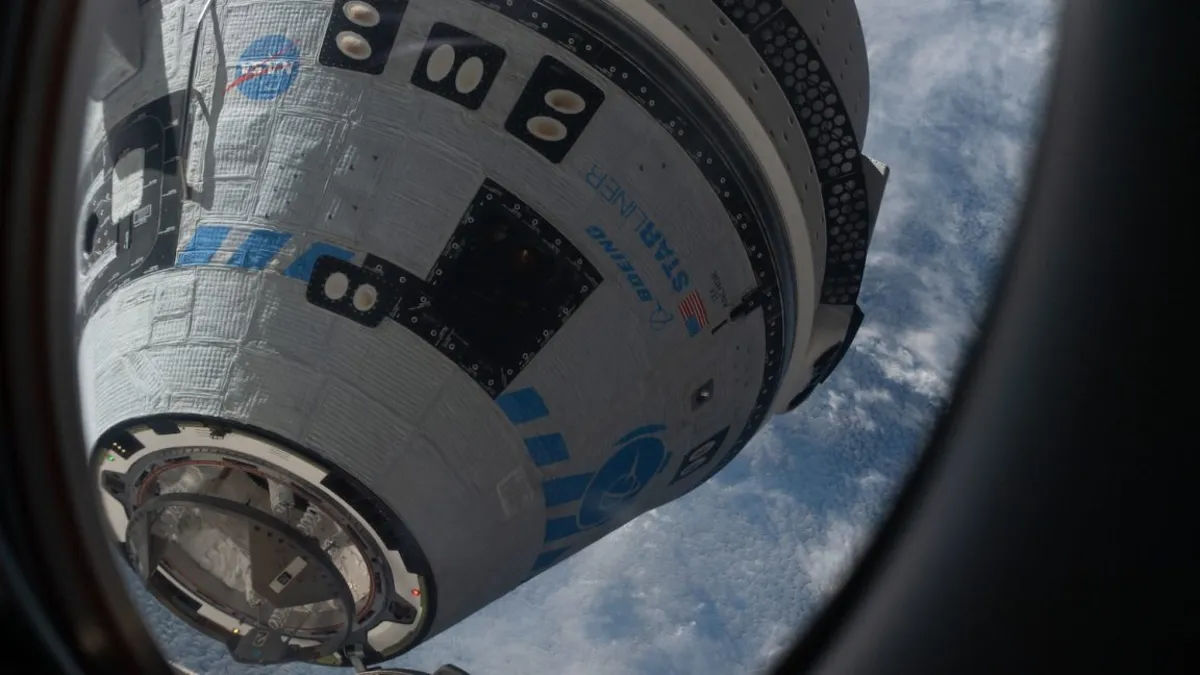
More than six months after an empty Starliner spacecraft successfully landed in a remote New Mexico desert, both NASA and Boeing remain undecided on whether the vehicle's upcoming flight will include astronauts. In a recent update, NASA clarified that it is still progressing through the certification process necessary for Starliner human missions. The timeline for Starliner's next flight indicates it will not occur until late this year or, more likely, sometime in 2026.
Two significant points emerged from NASA's latest communication regarding the Starliner spacecraft. First, substantial work remains before the spacecraft can take flight again, particularly involving extensive testing of its propulsion system. Secondly, it has become increasingly apparent that Starliner may only conduct a limited number of missions to the International Space Station (ISS) before its retirement.
Starliner's first crewed flight to the ISS, which took place last June, encountered several issues, the most critical being the failure of multiple maneuvering thrusters. Due to these concerns, NASA opted to return the crew, comprising Butch Wilmore and Suni Williams, on a Crew Dragon vehicle instead. Thankfully, they landed safely earlier this month, while Starliner autonomously returned in early September. Since then, NASA and Boeing have been meticulously reviewing data from this test flight.
Unfortunately, the malfunctioning thrusters were situated on the spacecraft's service module, which is discarded prior to reentry and cannot be recovered. Despite engineers from both NASA and Boeing addressing over 70% of the observations and anomalies from the flight, issues related to the propulsion system remain unresolved.
To tackle these ongoing propulsion system concerns, NASA is finalizing a comprehensive testing campaign scheduled for this spring and summer. Testing will occur at the White Sands Test Facility in New Mexico and will involve integrated firing of key Starliner thrusters within a single service module doghouse. This testing is critical to validate thermal models, inform potential upgrades to the propulsion and thermal protection systems, and develop operational solutions for future flights.
One potential solution being explored is the installation of thermal barriers designed to better manage temperatures and prevent the overheating issues observed during Starliner's previous missions. According to Steve Stich, the manager of NASA’s Commercial Crew Program, a clearer timeline for Starliner's next flight will emerge once the tests and analyses are completed. Stich mentioned, “We’ll continue to work through certification toward the end of this year and then go figure out where Starliner fits best in the schedule for the ISS and its crew and cargo missions.”
As of now, NASA has yet to determine whether Starliner's next mission will carry cargo or crew. The agency stated that this decision will hinge on the operational needs of the ISS. However, given the unresolved propulsion system issues, it is likely that the upcoming flight could serve as another test mission, primarily transporting cargo to the ISS. This would effectively mark Starliner’s fourth test flight since its inaugural mission in December 2019.
This week’s update from NASA also addressed a critical question surrounding the Starliner program: despite incurring losses exceeding $2 billion on its fixed-price contract with NASA, Boeing seems committed to completing the certification process. NASA's pressure likely plays a role in Boeing’s ongoing involvement, as the agency seeks to maintain two crew transportation providers for the ISS.
However, time is of the essence for Boeing if it hopes to make a significant impact on crew flights to the ISS, which is scheduled for retirement in 2030. Assuming an operational crew flight is achieved by 2026—which is still uncertain—Starliner could only potentially conduct four or five crewed missions to the ISS.
The initial contracts NASA signed with SpaceX and Boeing for crew transportation services over a decade ago included provisions for up to six crew rotation flights to the ISS following certification. To date, NASA has only granted Boeing the Authority To Proceed for three of its six anticipated operational Starliner missions. This milestone signifies a firm order for a deliverable from NASA.
In contrast, NASA has expanded SpaceX's commercial crew contract to encompass up to 14 Dragon missions with astronauts. SpaceX has already successfully launched ten operational crew missions to the ISS. Recently, NASA announced the crew for SpaceX's 11th mission, Crew-11, slated to launch no earlier than July. Among those selected are two astronauts initially assigned to Starliner's first operational mission, Mike Fincke from NASA and Japanese Mission Specialist Kimiya Yui.